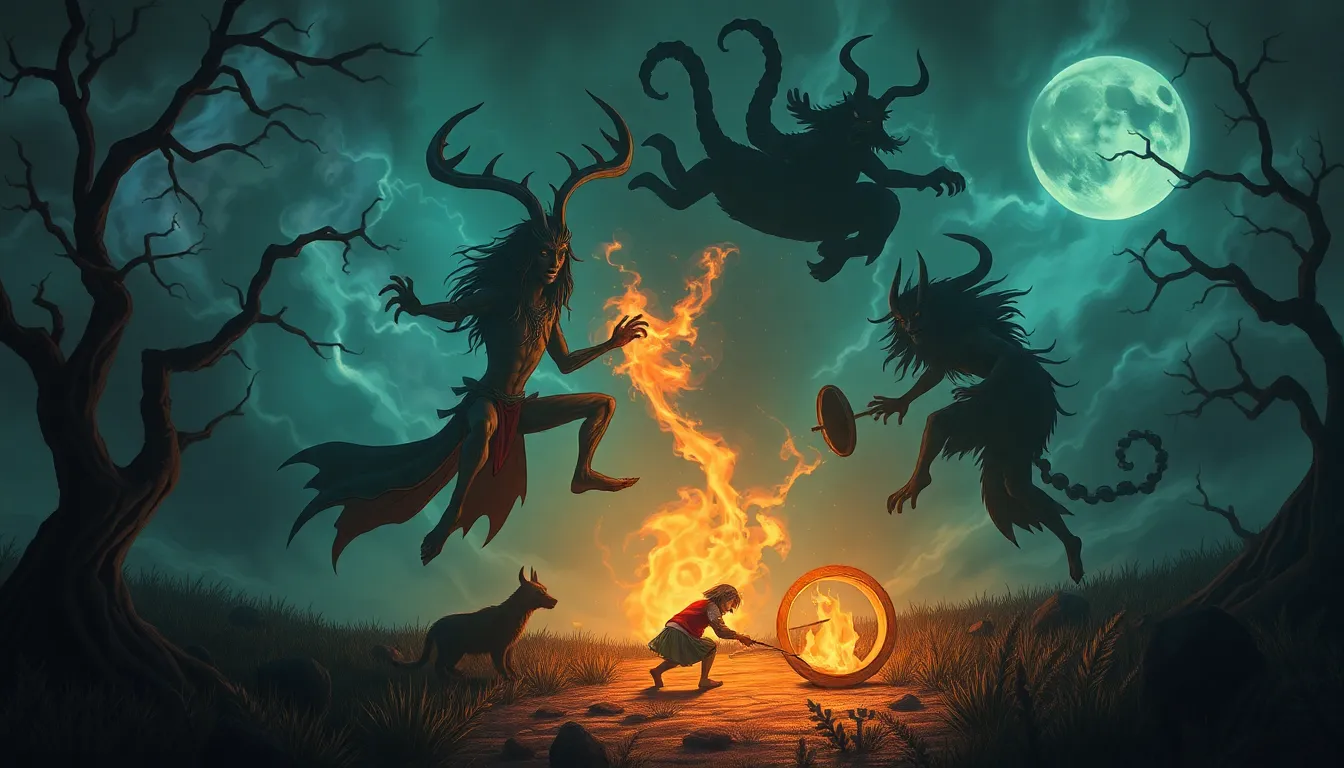The Playful Nature of Trickster Myths: A Celebration
Introduction to Trickster Myths
Trickster myths are foundational narratives found across numerous cultures, depicting figures who embody a playful, subversive nature. These characters often blur the lines between good and evil, challenging societal norms and expectations. Trickster figures, such as Anansi the Spider in African folklore or Coyote in Native American tales, serve as both creators and destroyers, reflecting complex human behaviors and emotions.
The playful nature of these stories highlights the importance of humor and wit, inviting audiences to engage with deeper truths about life, morality, and the human experience. Through their antics, tricksters reveal the absurdities of existence and offer a unique lens through which to view the world.
Historical Context of Trickster Myths
The origins of trickster myths can be traced back to ancient cultures, where they were often used to explain natural phenomena or social customs. In many indigenous cultures, these stories were not merely entertainment; they served as a vital means of education and moral instruction.
Over time, trickster figures have evolved and adapted to reflect changing societal values and challenges. What began as simple tales of deception and cleverness have transformed into complex narratives that address contemporary issues, such as identity, power, and justice.
Common Characteristics of Tricksters
Tricksters are characterized by several defining traits that set them apart from other mythological figures:
- Deception: Tricksters often use cunning and trickery to outsmart others.
- Humor: They employ humor to entertain and provoke thought, often making light of serious situations.
- Disguise: The ability to change forms or identities is a common trait, symbolizing adaptability and fluidity.
- Irreverence: Tricksters challenge authority and social norms, questioning established truths.
These characteristics allow tricksters to navigate their worlds in unique ways, using their wit to address challenges and instigate change.
Cultural Variations of Trickster Myths
Across various cultures, trickster figures take on distinct forms, each embodying unique qualities and narratives:
- Anansi: Originating from West African folklore, Anansi is often depicted as a spider who uses his intelligence to overcome challenges and teach moral lessons.
- Coyote: In Native American traditions, Coyote is a creator and a trickster, representing the duality of life, embodying both wisdom and folly.
- Loki: In Norse mythology, Loki is a complex figure who oscillates between hero and villain, often instigating chaos among the gods while also aiding them.
While these figures differ in their cultural contexts, common themes include the exploration of moral ambiguity, the consequences of deception, and the pursuit of knowledge through folly.
The Playful Nature of Trickster Tales
Playfulness is a central element in trickster tales, providing a means of engaging audiences and challenging perceptions. The humor embedded in these stories allows for a lighthearted exploration of serious topics, such as power dynamics, morality, and human relationships.
Through laughter and mischief, trickster narratives encourage audiences to question established norms and societal expectations. This playful spirit serves as a reminder of the importance of flexibility, creativity, and resilience in navigating life’s complexities.
Tricksters as Agents of Change
Trickster figures often act as catalysts for change, disrupting the status quo and instigating transformation in their communities. Their actions can lead to both positive outcomes and unforeseen consequences. For instance:
- Creation of new worlds: Tricksters frequently play a role in the creation of the world or significant changes within it.
- Social commentary: They address societal injustices and challenge authority, prompting reflection and dialogue.
- Personal growth: Through their experiences, they often facilitate personal growth and self-discovery for themselves and others.
These interventions highlight the transformative power of tricksters, emphasizing their critical role in mythology and society.
Psychological Perspectives on Trickster Myths
From a psychological standpoint, trickster myths offer insight into the human psyche. They can be viewed as symbols of the unconscious mind, representing our hidden desires, fears, and contradictions. The dual nature of tricksters encapsulates the complexities of human identity, reflecting the struggle between order and chaos.
Trickster tales often reveal the darker aspects of human nature, inviting audiences to confront uncomfortable truths and embrace the multifaceted nature of existence.
The Relevance of Trickster Myths Today
In contemporary society, trickster myths continue to resonate, inspiring modern adaptations in literature, film, and art. Authors and creators draw upon the rich tapestry of trickster narratives to explore themes of identity, resilience, and social justice.
Trickster figures remain relevant as they embody the spirit of rebellion and creativity, encouraging individuals to challenge the status quo and think outside the box.
Celebrating Trickster Myths Through Art and Performance
Art and performance play a crucial role in honoring and celebrating trickster traditions. Theater, visual arts, and festivals often incorporate trickster themes, bringing these stories to life and fostering cultural appreciation.
Contemporary artists and performers draw inspiration from trickster figures, creating works that reflect their playful spirit and subversive nature. Examples include:
- Theatrical productions: Plays that reinterpret classic trickster tales for modern audiences.
- Visual arts: Artists who explore the themes of transformation and identity through trickster imagery.
- Festivals: Celebrations that honor trickster figures from various cultures, promoting cultural exchange and dialogue.
Conclusion: Embracing the Spirit of the Trickster
Trickster myths offer valuable lessons and insights into the human experience. They invite us to embrace playfulness, creativity, and the power of laughter as we navigate life’s challenges. By reflecting on the stories of tricksters, we can learn to approach adversity with resilience and humor.
In a world that often demands seriousness and conformity, the spirit of the trickster reminds us of the importance of being adaptable, questioning norms, and celebrating the joy of existence.



